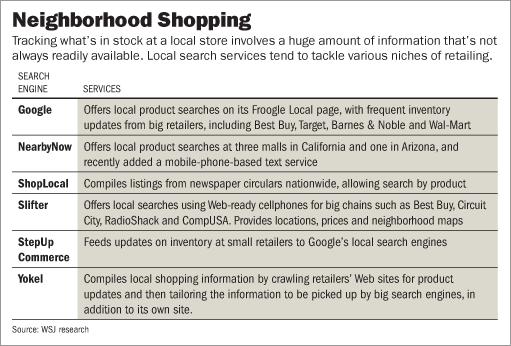On Angels' Wings Proposed legislation would give a tax break to early investors in small businesses
By COLLEEN DEBAISE, WSJ. March 19, 2007; Page R6
Proposed legislation winding its way through Congress could give angel investors a new incentive to fund start-ups -- and a more visible profile in the small-business community.
The Access to Capital for Entrepreneurs Act would provide a 25% tax credit to investors with a net worth of at least $1 million who make equity investments in early-stage small businesses -- the first time an investor would get a break for investing at the front end.
Angel investors -- traditionally, wealthy individuals willing to invest in a nascent business before anyone else wants to -- could use the proposed federal tax credit to offset as much as $500,000 of investments a year. But investments eligible for the credit would be limited to $250,000 per business to encourage angels to invest in at least two companies a year to get the full credit.
A Break at the Start
The proposal, introduced in late January by Rep. Earl Pomeroy, a Democrat from North Dakota, and Rep. Don Manzullo, an Illinois Republican, has gotten bipartisan support and an enthusiastic response from small-business groups, who say it will motivate high-net-worth individuals to invest in companies at the earliest stages. That's traditionally the most difficult time to obtain money, as start-ups don't yet have a track record to obtain a bank loan or enough viability to get access to venture capital. It's also the riskiest time for an investor, as the new enterprise could easily go belly up.
GIVE AND GET BACK
The Situation: Proposed legislation would give angel investors a 25% tax credit on investments of as much as $500,000 in start-ups.

What's at Stake: Small- business owners and others say the tax break will spur investment at the time firms need it most. But some people wonder if it also could lead to reckless investing.
What's Next: Proponents will spend the next few months lobbying for the measure in the House and Senate.
Proponents say the early-stage break would be a more effective tax incentive than a reduction in the capital-gains tax, which benefits an angel only at the back end, when a company is eventually sold or goes public and the investor records a gain on his or her initial investment. Currently, investors receive a partial exclusion of capital gains for investing in certain small businesses if stock in the business is held for more than five years.
"We do truly think that it will help spur investments," says Susan Preston, who researches angel investing at the Ewing Marion Kauffman Foundation, a Kansas City, Mo., nonprofit that supports entrepreneurship, and has consulted with members of Congress on the bill. "I've had angel group leaders tell me it will double their numbers."
But some do question the risks. The tax credit "may be fabulous, or it may have some unintended consequences," says Marianne Hudson, executive director of the Angel Capital Association in Vienna, Va., which officially has a neutral position on the federal tax credit. For instance, does a tax credit "really lead to investments? Does it make an investor invest in bad deals? Does it make people who shouldn't be investing invest?" The group, which was formed in 2004, represents 200 angel organizations in the U.S. and Canada and was formed to share practices, network and develop data about the field of angel investing.
Ms. Preston, who has provided angel capital to start-ups, says when investing in a small business at its earliest stage, "the risk is whether anything comes out of your investment, and that's a big risk." But the tax credit on the investment itself -- whether or not it eventually produces a return -- helps offset that gamble.
"You have to do your own analysis and make a determination that this company has a better chance at success than others," she says. But the tax credit "certainly provides that piece of incentive, 'I am going to do this investment because I can somewhat reduce the risk.' "
Underutilized Resource
Angels are the largest and oldest source of start-up capital for entrepreneurs, according to Jeffrey Sohl, director of the Center for Venture Research at the University of New Hampshire in Durham. But because the angel market consists largely of individuals who make investments quietly, little is known or understood about their practices -- making them one of the nation's most underutilized economic resources, he says.
According to the Small Business Administration's Office of Advocacy, there were about 25.8 million small businesses in the U.S. in 2005. (The SBA defines a small business as one with 500 or fewer employees.) And 671,800 of those were enterprises started that year.
According to the Center for Venture Research, in 2005, U.S. angels invested $23.1 billion in just 49,500 ventures, or about $470,000 a deal. Venture capitalists invested $22.1 billion in 3,008 deals, or about $7.4 million a deal, in the same period.
Investing in an early-stage company can be a lucrative proposition. There's little data on the subject since transactions are private, but the center's research indicates that angels typically look for businesses with the potential for a 20% to 40% annual return. For some investors, there's also a personal benefit: Many angels are successful entrepreneurs who have cashed out and now want to help others just starting out.
The investment is not without its risks, however, since many start-ups don't make it. Angels need to do due diligence to make sure the investment meets their investment criteria. Angels need to make sure the venture has a solid business plan, strong management team and viable exit strategy.
Sometimes, angels will take equity in the firm but require the entrepreneur to retain a larger stake, thereby making sure the entrepreneur has a vested interest in seeing the company succeed. In some cases, angels pool resources with other angels, forming angel groups or networks to mitigate risk.
Just a Start?
Mr. Sohl says that while a federal tax credit could provide some incentive to boost the number of angel investors, more needs to be done. European governments are "light years" ahead of the U.S., he says, often providing matching funds to angels willing to make an investment in entrepreneurs. Also beneficial would be educational programs that groom potential angels or raise awareness in the small-business community about existing angels.
"I don't want anyone to think [the tax credit] is the silver bullet that will increase angel investments," he says.
A tax credit for angels already exists in 21 states -- and both abuse and success have been reported.
In Hawaii, a tax credit for high-tech investment sparked controversy when taxpayers learned that investors got generous tax breaks for financing one-shot movie deals, such as the 2002 surfer-girl movie "Blue Crush," that didn't create postproduction jobs. The state ultimately tightened its rules for qualifying for the credit, known as Act 221.
In Wisconsin, however, where a 25% tax credit for angels who invest in early-stage Wisconsin technology businesses became effective in 2005, "our experience has been very positive," says Lorrie Keating Heinemann, secretary of the state Department of Financial Institutions. In 2004, before the tax credit, angels invested $2 million in nine companies, she says; in 2005, after the credit took effect, angels invested $19.5 million in 40 companies.
The state also helped create the Wisconsin Angel Network, a public-private initiative, to raise awareness of investment opportunities. Angels, for instance, can now get a tax credit for investing in state-certified stem-cell research companies.
"When we talked about angel investing a few years ago in our state, people didn't know what it was -- even the banks," Ms. Heinemann says.
Lobbying Efforts
Back in Washington, small-business groups that want the federal tax credit signed into law will spend the coming months lobbying for their cause. The fact that the measure was introduced so early in the new Congress could help their efforts. A similar measure was introduced in the Senate and House late in the last Congressional session -- by the same representatives and by Democratic Sen. John F. Kerry of Massachusetts and Republican Sen. Olympia J. Snowe of Maine -- but wasn't acted upon before the session ended.
A mix of small-business groups -- including Women Impacting Public Policy, the National Association for the Self-Employed and the American Nursery and Landscape Association -- has formed a coalition to support the bill. Barbara Kasoff, president of Women Impacting Public Policy, says an informal poll of the group's members, primarily women business owners, found that 30% might become angels if the tax credit passed.
She sees the credit as "opening the door for many other angel investors in this country who are not angels now."
 If Virginia Tech had the ability to send a SMS message to all their students. after the morning murders - would this have effected the murders later that day? Email was sent, but very few students were at their computers.
If Virginia Tech had the ability to send a SMS message to all their students. after the morning murders - would this have effected the murders later that day? Email was sent, but very few students were at their computers.






 Check out this PODCAST interview with PR Web
Check out this PODCAST interview with PR Web 





